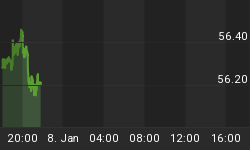Pretend for a second that you recently retired with a decent amount of money in the bank, and all you have to do is generate a paltry 5% to live in comfort for the rest of your days. But lately that's been easier said than done. Your money market fund yields less than 1%. Your bond funds are around 3% and your bank CDs are are down to half the rate of a couple of years ago. Stocks, meanwhile, are down over the past decade and way too volatile in any event. If you don't find a way to generate that 5% you'll have to start eating into capital, which screws up your plan, possibly leaving you with more life than money a decade hence.
Now pretend that you're running a multi-billion dollar pension fund. You've promised the trustees a 7% return and they've calibrated contributions and payouts accordingly. But nothing in the investment-grade realm gets you anywhere near 7%. If you come up short, the plan's recipients won't get paid in a decade or - the ultimate horror - you'll have to ask the folks paying in to contribute more, which means you'll probably be scapegoated out of a job.
In either case, what do you do? Apparently you start buying junk bonds. According to Saturday's Wall Street Journal, junk issuance is soaring as desperate investors snap up whatever paper promises to get them the yield they've come to depend on. Here's an excerpt:
U.S. companies issued risky "junk" bonds at a record clip this week, taking advantage of keen investor appetite for returns amid declining interest rates and tepid stock markets.
The borrowing binge comes as the Federal Reserve keeps interest rates near zero and yields on U.S. government debt are near record lows. Those low rates have spread across a variety of markets, making it cheaper for companies with low credit ratings to borrow from investors.
Corporate borrowers with less than investment-grade ratings sold $15.4 billion in junk bonds this week, a record total for a single week, according to data provider Dealogic. The month-to-date total, $21.1 billion, is especially high for August, typically a quiet month that has seen an average of just $6.5 billion in issuance over the past decade.
For the year, the volume of U.S. junk bonds has exceeded $155 billion, 80% higher than in the year-ago period and easily on pace to surpass the record $163.6 billion total for 2009.
Investors have been snapping up the new non-investment-grade bonds, having grown frustrated with stocks and with the meager yields on safer government and high-grade corporate bonds.
"Even though high-yield bond yields have come [down], versus other asset classes, they're still comparatively attractive, especially when you consider the direction of default today," says Darin Schmalz, a director in leveraged finance at Fitch Ratings. "When you take into account other investment options for investors, and a benign default rate, the high-yield asset class is still pretty attractive."
In recent decades, following periods of economic slowdown, companies have tended to enjoy lower borrowing rates, which has helped credit markets recover and kept lower-rated companies afloat, says Christopher Garman, head of high-yield research firm Garman Research.
When the Fed keeps borrowing rates so low, "you see investors piling more into the high-yield market," he says. "It becomes part of a virtuous cycle that allows lower-rated companies to refinance their liabilities."
Companies are using most of the proceeds of the junk-bond offerings to refinance more expensive debt, or in some cases to pay special dividends to their private-equity owners. Many of the refinancings are for companies that took on massive debt over the last decade.
The refinancings, on the whole, are positive for the economy, because they help companies with too much debt avoid default or bankruptcy. But they do little to create new economic growth, and in some cases simply delay an inevitable reckoning.
Some thoughts:
-
This is exactly what the government is hoping for in pushing yields down to zero. Forcing conservative investors to reach for yield saves the day in the short run by funneling extra liquidity to the sector of the economy that is most in danger of imploding. So the military industrial complex/welfare state lives to borrow and spend another day.
-
One of the signs that a system headed for a crack-up is deteriorating credit quality. In other words, when low-quality entities are doing most of the borrowing, trouble will ensue. For more on this, look into the work of Hyman Minsky, an economist who seems to have understood today's world pretty well.
-
This quote deserves a closer look: "When you take into account other investment options for investors, and a benign default rate, the high-yield asset class is still pretty attractive." The only possible response to this is that they really should make a financial history course mandatory for money managers. The fact is that in every bubble, default rates are nice and low when capital is flowing in and then spike when the money stops. Jeeze, it was just a few years ago that housing analysts were using the low default rate on mortgages and credit cards to dismiss the possibility of a housing bust.
-
Obviously we're once again solving a near-term problem by creating a much bigger one a few years down the road. What happens to retirees when their savings and pension funds are vaporized by the inevitable junk bond bust? More than likely they'll panic and go to all cash, which will 1) crash the stock and bond markets, 2) leave them without enough income to meet their obligations, and 3) provoke another massive bailout at taxpayer expense. That is, unless the dollar tanks in the meantime, in which case it's game over for everyone.
















